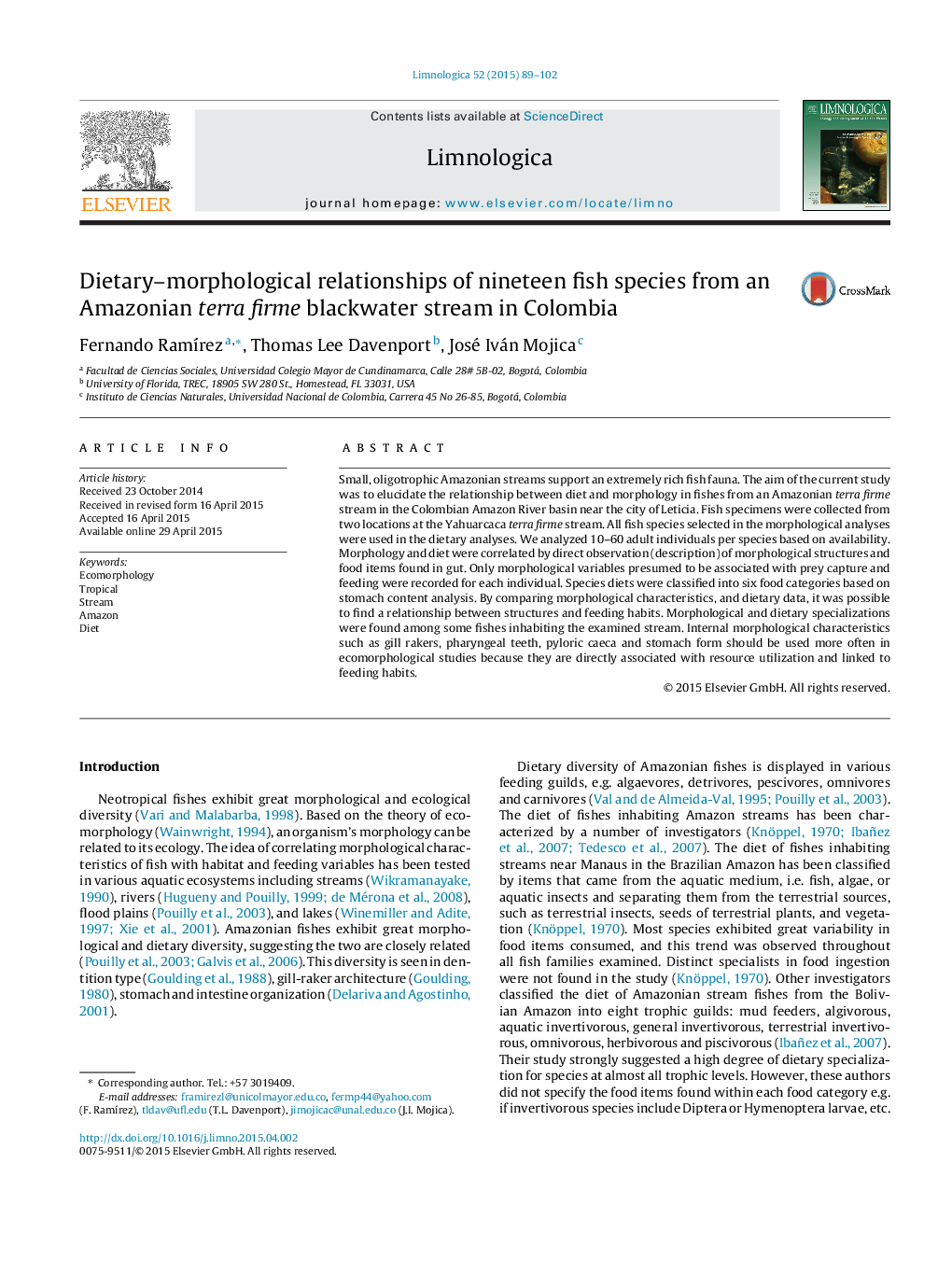| Article ID | Journal | Published Year | Pages | File Type |
|---|---|---|---|---|
| 6305545 | Limnologica - Ecology and Management of Inland Waters | 2015 | 14 Pages |
Abstract
Small, oligotrophic Amazonian streams support an extremely rich fish fauna. The aim of the current study was to elucidate the relationship between diet and morphology in fishes from an Amazonian terra firme stream in the Colombian Amazon River basin near the city of Leticia. Fish specimens were collected from two locations at the Yahuarcaca terra firme stream. All fish species selected in the morphological analyses were used in the dietary analyses. We analyzed 10-60 adult individuals per species based on availability. Morphology and diet were correlated by direct observation (description) of morphological structures and food items found in gut. Only morphological variables presumed to be associated with prey capture and feeding were recorded for each individual. Species diets were classified into six food categories based on stomach content analysis. By comparing morphological characteristics, and dietary data, it was possible to find a relationship between structures and feeding habits. Morphological and dietary specializations were found among some fishes inhabiting the examined stream. Internal morphological characteristics such as gill rakers, pharyngeal teeth, pyloric caeca and stomach form should be used more often in ecomorphological studies because they are directly associated with resource utilization and linked to feeding habits.
Related Topics
Life Sciences
Agricultural and Biological Sciences
Aquatic Science
Authors
Fernando RamÃrez, Thomas Lee Davenport, José Iván Mojica,
